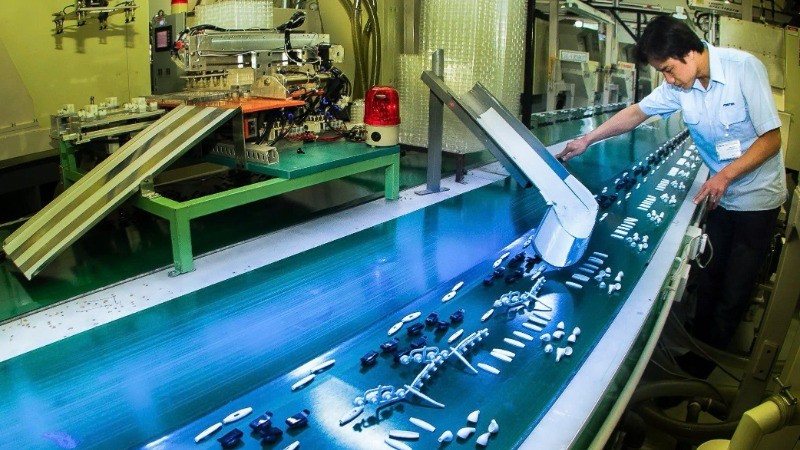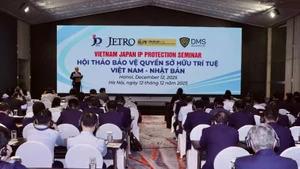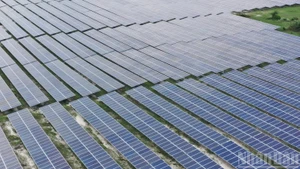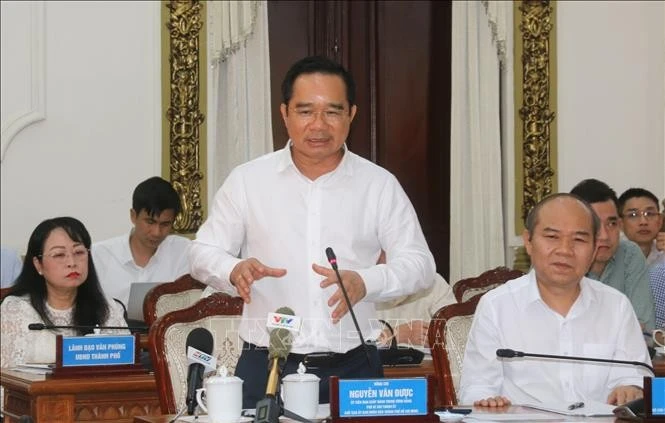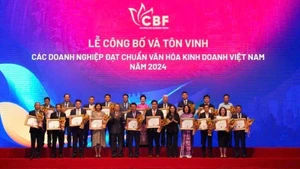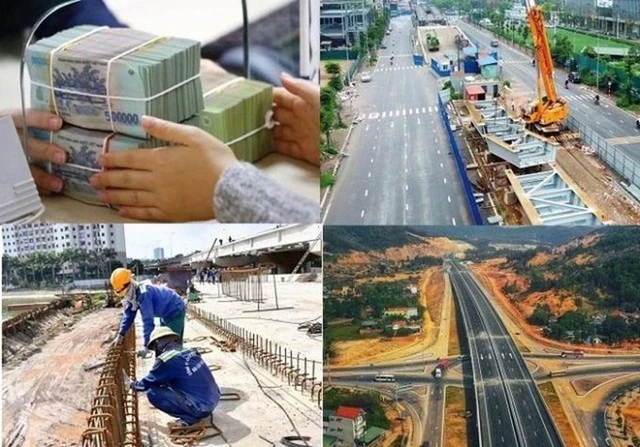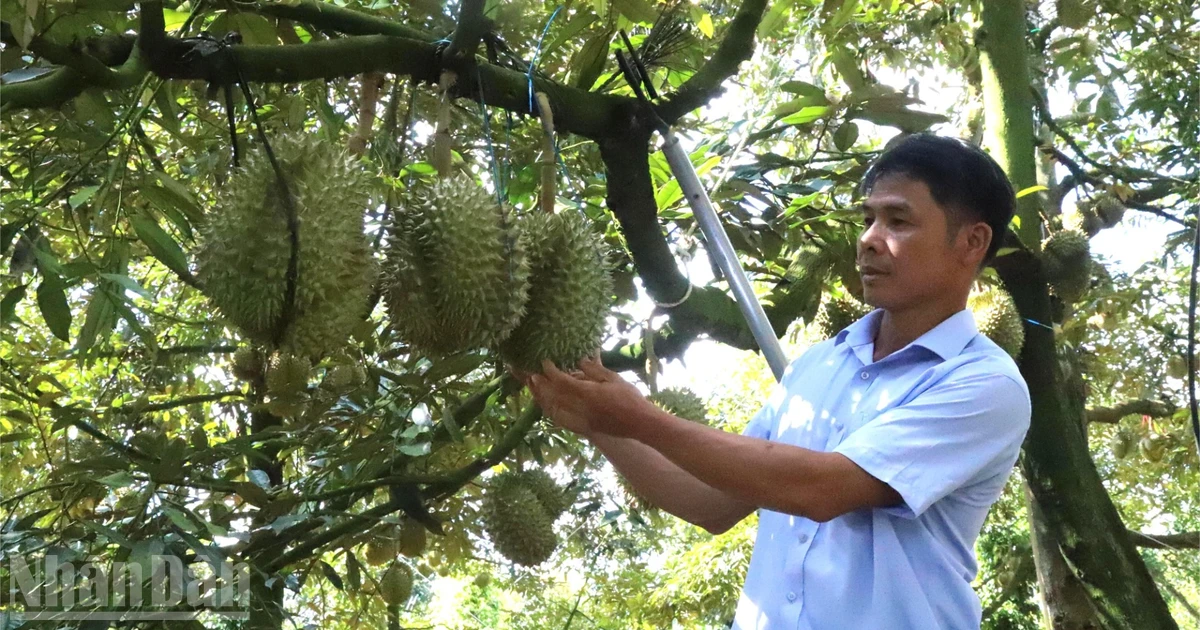Decline in US orders
Over the past five years, the US has been one of Ha Noi’s largest export markets, accounting for 17–21.4% of the city’s total export value, with an average annual growth rate of 6.4%. In the first four months of 2025, Ha Noi’s export turnover to the US reached 1.1 billion USD (17.4% of the city’s total export turnover), an increase of 19.1% compared to the same period in 2024.
According to Vo Nguyen Phong, Director of the Ha Noi Municipal Department of Industry and Trade, if the US imposes a 46% countervailing tariff on Vietnamese exports, the city’s export turnover could fall by 5–7%, and its GRDP growth could decline by 0.3–0.5% in 2025.
In Ho Chi Minh City, the volume of goods processed for export to the US has shown signs of decline during the temporary suspension of US countervailing tariffs, significantly affecting enterprises in the garment, footwear, and wood processing industries, thereby impacting jobs and workers’ incomes.
According to the human resources department at Thien Loc Footwear Joint Stock Company (District 12, Ho Chi Minh City), from late May, workers’ daily shifts are being shortened from 6 pm to 4 pm. Most employees expressed concerns and uncertainty. The company explained that this measure is due to a drop in orders from the US, with partners now signing monthly contracts instead of quarterly or semi-annual ones, forcing the company to reduce working hours.
Ha Quang Tuyen, Chairman of the Trade Union at Thien Loc Footwear JSC, shared: “In previous years, the company processed around 3 million pairs of shoes annually, but now orders are trickling in. We must accept orders on a case-by-case basis, which creates operational uncertainty, yet we still must ensure wages and benefits for nearly 2,300 workers.”
“The company has had to cut working hours (from 10 to 8 hours per day), encourage workers to take annual leave, and persuade employees to share the burden and overcome this challenging period together,” Tuyen added.
In the face of trade tensions and US tariff changes, businesses must proactively seek and expand into other markets. Currently, several of the company’s European partners, including a firm from Germany, have pledged to maintain contracts and not cut orders. This has helped the company somewhat in weathering the storm while awaiting traditional orders from the US market.
Adjusting business strategies
During the 90-day window when the US has suspended retaliatory tariffs pending negotiation outcomes, most export businesses have proactively developed plans to weather tariff-related uncertainties.
Nguyen Xuan Phu, Chairman of the Board of Directors of Sunhouse Group Joint Stock Company, stated: “In 2025, the company aims to export around 3 trillion VND worth of goods to the US. To meet this target, we are accelerating order deliveries ahead of the tariff imposition and boosting direct sales of the Sunhouse brand in the US. Additionally, we are expanding into markets like Argentina and Brazil and strengthening our presence in the domestic market.”
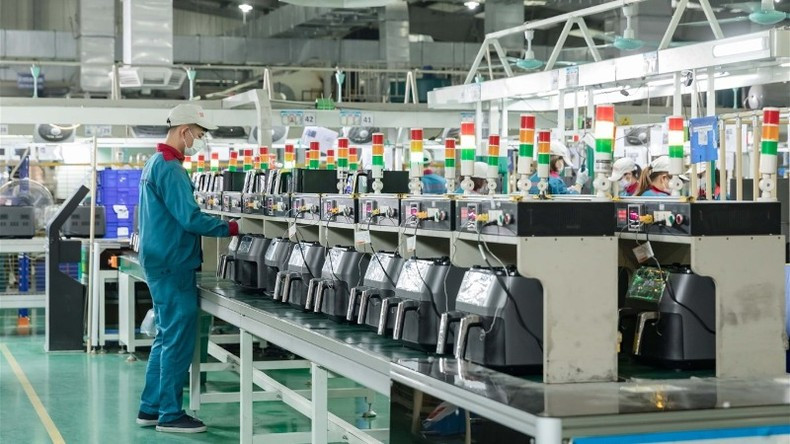 |
| Production activities at Sunhouse Group Joint Stock Company. (Photo: NGUYEN TRANG) |
In Binh Duong Province, which has seen stable export growth with nearly 11.7 billion USD in export value in the first four months of 2025 (up 9% year on year), key exporters have implemented various responsive measures.
Hoang Ngoc Yen, Chairman of the Board of Director of Nhi Binh Plastics Co., Ltd. (at Viet Nam–Singapore Industrial Park II-A), reported that since the beginning of 2025, our production and exports have risen by 15% compared to the same period in 2024, with the US accounting for 60% of our total exports.
During the 90-day suspension of US tariffs, the business is ramping up production to meet existing orders and accelerate shipments as well as negotiating with clients to revise prices and increase order volumes to share potential tax-related costs.
The company is also actively engaging in trade promotion with European and Japanese clients and collaborating with partners shifting orders from other countries to Viet Nam. With these strategies, the company expects to perform well in 2025 and ensure stable material and spiritual well-being for its workers.
To boost production and export activities in the near future, provincial and municipal industry and trade sectors are implementing comprehensive measures. These include closely monitoring market developments and local import–export policies, effectively promoting international economic integration, and intensifying trade promotion efforts, especially leveraging benefits from free trade agreements (FTAs). There is also an emphasis on attracting investment projects in raw material production and distribution for export manufacturing, to ensure stable supply chains and fulfil tax incentive conditions under FTAs.
Moreover, local departments of industry and trade are collaborating with the Ministry of Industry and Trade and relevant agencies to implement effective trade defence measures in response to foreign trade remedy cases, thereby protecting export markets. They are also maintaining regular trade promotion coordination meetings with Viet Nam’s overseas trade offices and promptly updating businesses and associations with market information, regulations, standards, and foreign market conditions that could affect Viet Nam’s import-export activities.
In Binh Duong and other major export hubs, rapid response task forces have been established to assess the impacts of US retaliatory tariffs on business operations. These teams are tasked with resolving issues faced by companies affected by the new tax measures.
Chairman of Sunhouse Nguyen Xuan Phu emphasised that in anticipation of a challenging financial outlook, businesses must prepare contingency plans to cope with potential revenue declines, inventory fluctuations, and resource constraints.
Le Vinh Son, Chairman of the Board of Directors of Son Ha Group and Chairman of the Ha Noi Association of Key Industrial Product Manufacturers (HAMI), noted that enterprises should not rely too heavily on a single market. “No matter how promising a market may seem, once tariff barriers are imposed, businesses risk losing revenue and face operational disruptions in cash flow, supply chains, and workforce retention. Diversifying export markets is essential to risk mitigation,” he said.
Tariff volatility from the US presents a significant challenge for Viet Nam’s exporters, but it also serves as a test of their adaptability and initiative. With synchronised support from the government and flexible responses from businesses, Viet Nam’s exports are expected to gradually adapt, expand into new markets, and maintain production and employment stability.
